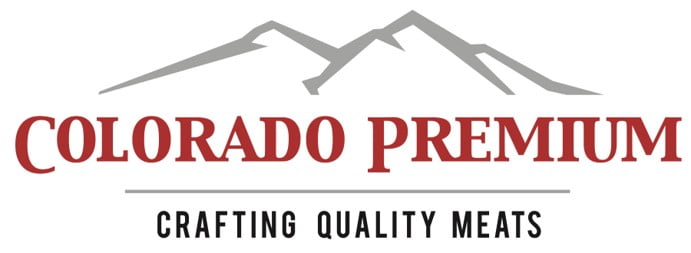Warehouse Safety Evaluation — Fast, Practical Help After an Incident
If you’ve just had a near-miss or recordable, this page is your field guide. Use the tools below to stabilize the situation, capture facts, and prevent a repeat — then tap our specialists to run a comprehensive evaluation of people, equipment, and processes.
What managers tell us: “I’m juggling reporting, keeping shifts running, and figuring out why it happened — without pointing fingers.”
Our evaluations separate fact from noise so you can protect people, stay compliant, and reduce total material-handling cost.
Make the next 30 days count
Start with the 24-Hour Checklist, log the facts, and use our Risk Calculator to prioritize corrective actions. When you’re ready, our team completes a full Warehouse Safety Evaluation — layout, traffic flows, equipment/telematics, training, signage, power and maintenance, change management, and audit readiness.
Note: Regulations change by jurisdiction. Treat this as guidance, not legal advice.
24-Hour Warehouse Incident Checklist
Stabilize & preserve the scene
Attend to injuries, secure energy sources, and isolate the area. Photograph conditions, controls, signage, obstructions, and damage before cleanup.
Capture reliable statements
Within the shift, record brief, factual statements from operators, pedestrians, spotters, and supervisors. Avoid leading questions; time-stamp each note.
Pull the data
Export truck telemetry, access control logs, camera clips, maintenance records, and training/authorization status for the involved associates.
Map the flow
Sketch the exact travel paths and tasks underway (putaway, case-pick, cross-dock, battery change). Mark congestion, blind spots, and temporary storage.
Notify & document
Escalate per policy, complete initial incident report, and start your regulatory clock. If medical treatment, hospitalization, or fatality is involved, follow your required reporting window.
Plan interim controls
Assign quick barriers: speed limits, one-way designations, cones/chain, temporary mirrors, or spotters while the investigation proceeds.
Printable checklist
Click to expand and print what you need right now.
Documentation to pull
- Telematics/impact logs for involved equipment
- Operator authorization & last training dates
- Maintenance history & open work orders
- Shift staffing, work assignments, overtime
- Camera footage timestamps
Scene photos (angles)
- Overall area (N/S/E/W)
- Controls: signage, mirrors, lights, alarms
- Floor condition: debris, moisture, dock plates
- Racking condition & load labels
- Battery/LP area if applicable
Interim controls menu
- Post temporary 3–5 mph limits & horn zones
- Block end-caps; convert to one-way aisles
- Increase lighting & add mobile mirrors
- Deploy pedestrian lanes where feasible
Pro tip: save all originals to a single incident folder with YYYY-MM-DD naming.
Root-Cause Playbook (without the blame)
We use a systems lens — procedures, layout, equipment capability, maintenance, supervision, incentives, and skills — to identify the combination that allowed the incident.
- Task fit: Was the equipment right for load, aisle width, grade, and visibility?
- Environment: Aisle width, intersection control, pallet overhangs, rack protection, lighting.
- Human factors: Fatigue, overtime, pace pressure, distractions, training recency.
- Signals: Near-miss/impact data trends and ignored alarms.
- Change management: Temporary processes (seasonal volume, new SKUs, construction).
Our deliverable is a prioritized countermeasure plan — quick wins in days, engineered fixes in weeks, and policy/process changes in the following cycle.
5-Whys worksheet (mini)
Problem statement
Describe the loss, location, task, and time window in 1–2 sentences.
Why #1
Immediate cause (e.g., pallet corner struck at end-cap).
Why #2–#5
Keep asking “why” until you hit a policy, procedure, design, or management system issue.
See Material Flow Evaluation for deeper throughput/traffic analysis.
Risk & Cost Calculator
Estimate priority by multiplying likelihood × severity, then approximate total cost including downtime and damage.
What’s included in an HCO Warehouse Safety Evaluation?
- People & Practices: Authorization, training matrix, PIT/pedestrian rules, supervision, and incentives.
- Facility & Flow: Aisles, intersections, rack protection, floor conditions, lighting, signage, pedestrian routes.
- Equipment & Power: Fleet mix, telematics, speed/impact settings, battery/LP fueling areas, maintenance quality.
- Data & Trends: Impacts/near-miss, work orders, downtime, charge cycles, and seasonal volume swings.
- Compliance Readiness: Documentation, inspections, and practical controls aligned to OSHA expectations.
- Action Plan: Prioritized recommendations, cost/benefit, and a timeline you can execute.
Need turnkey fixes? Explore our Turnkey Maintenance, Fleet Management, Pedestrian Detection, and Layout Evaluation.
What warehouse leaders get from this engagement
reduction in equipment impacts within 90 days through engineered controls and behavior prompts.
lower unplanned maintenance cost via right-sizing the fleet and eliminating chronic damage.
typical turnaround for findings and prioritized action plan across a single facility.






Safety Evaluation: common questions
How fast can you be on-site?
For urgent incidents, we can typically begin remotely within 24–48 hours and schedule on-site within days depending on location and access.
Will this help with regulatory reporting?
We help you organize facts and documentation. Your local regulatory reporting remains your responsibility, but our timeline and evidence capture process supports it.
What if I manage multiple buildings?
We’ll evaluate one facility deeply, then roll out a scalable checklist and control set to your network, including telematics thresholds and training content.
Do you also address ergonomics and pedestrian flow?
Yes. We map pedestrian routes, high-risk crossing points, work heights, and repetitive motions and recommend engineered changes and work methods.
Get a Rapid Safety Assessment
Tell us what happened, your location, and the kind of help you need. We’ll propose scope, timeline, and a fixed cost.
Office hours: Mon–Fri 8:00–5:00 EST • Raleigh, NC
